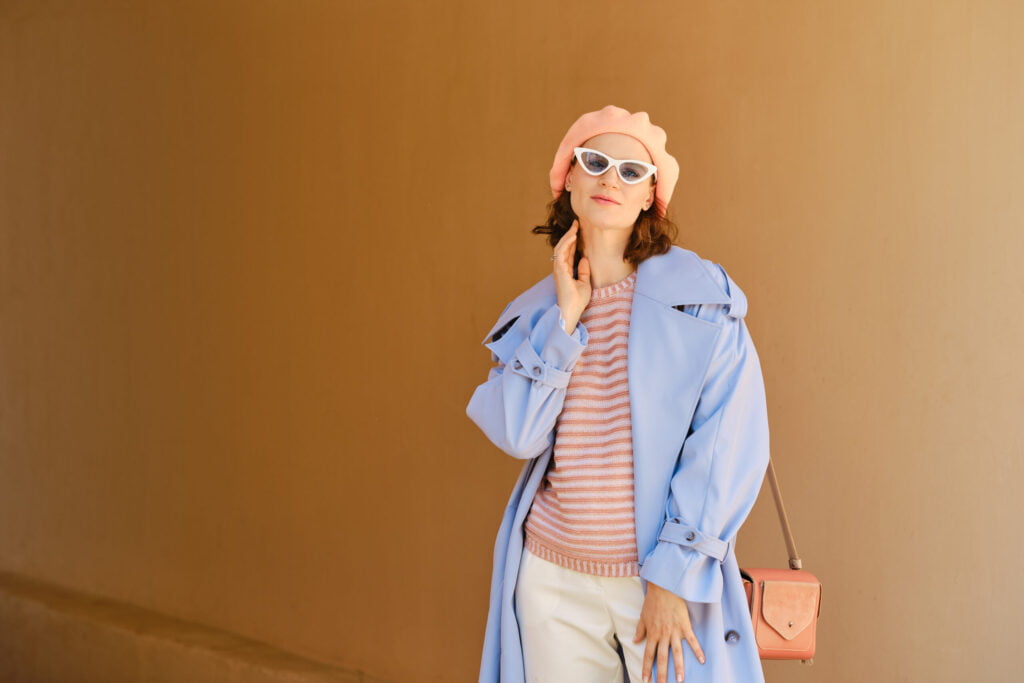Adding color to your wardrobe can make a big difference in your look. Not only does it make your outfits more interesting, but it can also help you feel more confident and bold. Incorporating different colors into your wardrobe is a great way to explore your personal style and give you more options when putting together outfits. However, many people don’t know how to achieve this or where to start. Fortunately, there are resources that can guide you. In this article, we’ll explore the art of using colors to enhance your wardrobe.
Color Strategies for Different Body Types

Colors can enhance or downplay certain aspects of your body shape. Dark colors tend to be slimming, while lighter and brighter colors can add volume or draw attention. If you have an hourglass figure, you can play with color-blocking to accentuate your curves. For example, try a dress with a dark color on top and a lighter color on the bottom, or vice versa. You can check out some of these women’s dresses Canada that come in plus sizes if you want stylish clothes that fit you properly and make your figure look fantastic.
For pear-shaped body types, incorporating bright, bold colors on the top can draw attention to your upper body and balance out your lower body. In contrast, individuals with an apple-shaped figure can incorporate darker colors on the top half and brighter colors on the bottom to bring more balance to their overall figure. For those with a rectangle-shaped body, creating visual interest with contrasting colors and patterns can add curves and create the illusion of a more hourglass shape. Invest in clothing items that feature bold prints or color-blocking elements to enhance your appearance.
Understanding Color Theory

Color theory is a guide to creating harmonious and pleasing combinations of colors. It revolves around the color wheel, which displays primary, secondary, and tertiary colors. The primary colors are red, blue, and yellow. These colors cannot be created by mixing other colors together. Secondary colors (green, orange, and purple) are created by mixing primary colors. Tertiary colors are formed by combining primary and secondary colors.
There are also different color schemes, such as monochromatic, complementary, and analogous. Monochromatic colors consist of different shades and tints of the same color, while complementary colors are those that are opposite each other on the color wheel, such as red and green or blue and orange. Analogous colors, on the other hand, are found next to each other on the color wheel, like yellow, green, and blue. Color can even affect our emotions and our moods.
Accessorizing with Color
Accessories can also help enhance your wardrobe with the power of color. Colorful accessories, like scarves, jewelry, and even shoes, can either complement or contrast with the colors in your outfit, bringing your look together and adding visual interest. If your outfit features primarily neutral colors, a bold, colorful accessory can make the entire ensemble pop. Think about the color of your accessories in relation to the colors of your outfit.
If your clothing is primarily cool-toned (such as shades of blue or green), choose accessories in complementary cool tones. Conversely, if your outfit features warm colors like reds, oranges, or yellows, opt for warm-toned accessories. Don’t be afraid to mix and match colorful accessories to elevate your look. Try layering necklaces of different lengths and colors, or stack bracelets that feature different textures and shades for a fun, dynamic aesthetic.
Considering Your Skin Tone

You need to consider your own complexion when choosing colors for your wardrobe. People can be categorized into four main seasonal skin tone classifications: Spring, Summer, Autumn, and Winter. Spring skin tones suit warm and bright colors, such as coral or golden yellow. Summer tones look best in cool and soft shades like lavender or dusty rose. Autumn skin tones should opt for rich, warm colors like burgundy or rust. Winter skin tones look stunning in bold, cool hues like royal blue, cherry red, or emerald green.
As you can see, the power of color can be harnessed to create a wardrobe that looks fantastic and makes you feel confident and stylish. By understanding color theory, applying color strategies for different body types, accessorizing with color, and considering your skin tone, you can transform your closet and wear colors that make you feel and look your best. If you follow the tips in this article, then you will be well on your way to finding a style that works for you.









